Anything but expendable (part 3)A history of the Evolved Expendable Launch Vehicle (EELV) Secondary Payload Adapter (ESPA)by Darren A. Raspa
|
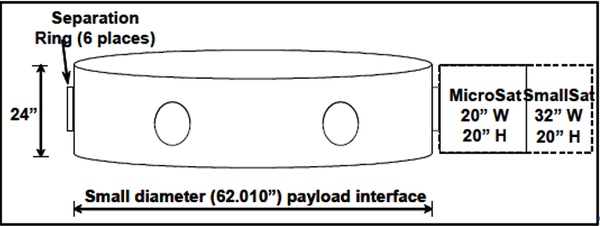 Figure 1. Initial 1997 design of the secondary payload adapter ring.[3] |
CSA moved quickly to complete the analysis and design for the Phase I portion of the SBIR with success by the end of the year. This success was added to by the proven test on orbit (within an astounding year of its development) of their SoftRide vibration mitigation ring on the Naval Research Lab’s GEOSAT Follow-On (GFO) satellite and the NRO’s Orbital/Suborbital Program (OSP) STEX satellite in February and October of 1998, respectively. Incidentally, it was while briefing these programs at the Pentagon, mentioned in Part 1, that Conor Johnson’s Blackberry went offline following the PanAmSat spacecraft control processor failure that shut down 80% of US paging and mobile devices and satellite news networks.
| At CSA they called it the SoftRide Adapter for Small Satellites on EELV—the SASSE ring—but AFRL and Aerospace had different ideas for the name. |
As the year came to a close, Fosness walked down Aberdeen Drive on Kirtland from AFRL to the STP office at SMC and presented Kitty Sedam and the Aerospace engineers with a proposal: bring CSA on for a Phase II SBIR under their “Fast Track” program. Under this program, if an exceptionally qualified candidate rose above the others, the SBIR office would match any funds put forward by the local lab for the second phase of the grant, that being designing, fabricating, and testing a full-scale demonstration for evaluation and launch vehicle configuration simulation. Approved for partial funding by STP and primary funding by AFRL Space Vehicles, CSA was awarded a Phase II.[4]
Conor Johnson had a new associate principal engineer at CSA named Joseph “Joe” Maly, who got to work immediately on a test structure for the initial adapter ring design. At CSA they called it the SoftRide Adapter for Small Satellites on EELV—the SASSE ring—but AFRL and Aerospace had different ideas for the name. Lisa Berenberg was still new to the Aerospace Corporation when the whiteboard came out in the AFRL Space Structures Lab. “We had a competition to name it,” Berenberg remembers. In the room were the young members of the ring adapter team. Among the group was a young engineer named Jeffrey Ganley from the AFRL structures group, Captain Scott Haskett from STP, and Berenberg from Aerospace. They do not recall who finally came up with the final name for CSA’s SASSE ring, but the name selected stuck: the EELV Secondary Payload Adapter: the ESPA ring. It became clear, however, that even getting the name approved was an uphill battle.[5]
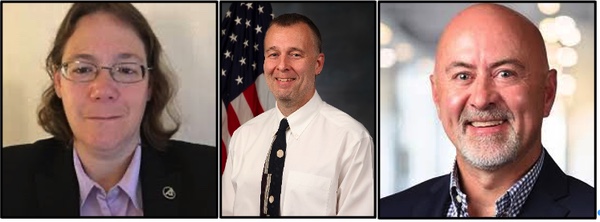 Figure 2. (L to R) Aerospace’s Lisa Berenberg, AFRL’s Jeff Ganley, AFRL/BlackVe’s Peter Wegner. |
At AFRL on Kirtland, Dino Sciulli took over from Gene Fosness on ESPA, who was then replaced by Peter Wegner as program manager when Sciulli left the Lab for the NRO. Wegner, who is the cofounder of space composite structures and materials startup BlackVe and a member of the Air Force Scientific Advisory Board, remembers the struggle to get ESPA off the ground: “Whenever you look at a battleship floating in the ocean, you should realize that that battleship is probably only there because someone stuck their neck out to just force it through the system.”
Presenting the Ring: EELV SPO Response to the ESPA
Wegner recalls travelling to the Pentagon with Alok Das’s Palace Knight student, AFRL composite expert Steve Huybrechts, for a meeting with the Air Force EELV office. “I got called to the Pentagon to have a meeting with the EELV SPO director, and you know, we're a couple of young guys in our late 20s, early 30s. We’re supposed to go to this conference room in the Air Force wing of the Pentagon. And we sit down at this big cherry desk, Steve and I, and in comes a guy in a black suit and five colonels and they all sit down on their side. And they just start berating us for this program.” The onslaught continued for some time. “And I remember so clearly this colonel [EELV Program Director Col. Robert K. Saxer], and he says, ‘You cannot call it ESPA because it's not part of the EELV program,’ and I'm just sitting there, mostly tired. And then at the end of the day, the guy in the black suit [likely Assistant Secretary of the Air Force for Acquisition Lawrence J. Delaney] says, ‘OK, well, what do you guys have to say about it?’ And so, we tell him.” Huybrechts and Wegner proceeded to plainly lay out the 10,000-kilogram excess margin on launchers and the opportunity ESPA would provide for space access. Silence filled the room, and one by one the group of Air Force colonels turned to the unidentified man in the suit for his final decision. “We tell him, ‘We’re just trying to fly these small payloads safely on this small adapter,’ and he goes, ‘Well, OK. Sounds like a good plan to me. This meeting’s over.’”[6]
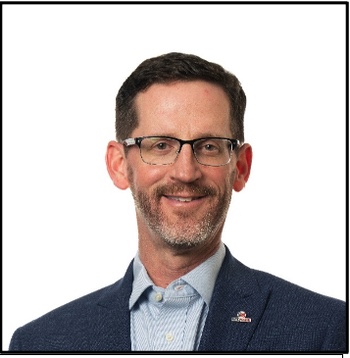 Figure 3. Lockheed Martin/CSA/Moog/Redwire’s Greg Sanford. |
Wegner was only one of several individuals at AFRL and industry who put their early careers and livelihoods on the line to create the ESPA, young engineers such as Lockheed Martin’s Greg Sanford. Now senior vice president at Redwire Space, in the late 90s Sanford was fresh out of the University of Wyoming’s engineering program, which he had attended along with Wegner. Peter remembered his friend, Greg, as a structural engineering ace, which was exactly what the ESPA team needed for testing. What he really needed was someone to build a static test facility on Kirtland in the structures lab in which the ESPA could be tested. Sanford recalls, “I had a job at Lockheed Martin [in Denver] where I was doing structural testing. Peter and the ESPA team went to Lockheed Martin to discuss ESPA structural testing and the possibility of having Lockheed do the testing. As it turns out, they talked with my boss, John Bradford, and Peter found out I worked for John. Peter decided to pivot and offered me a job in Albuquerque to setup the facility.”
Shortly after the successful—if jarring—trip to the EELV office in DC and the preliminary design review (PDR), Wegner traveled with the ESPA team to the Boeing facility in Huntington Beach, California to review their ESPA test structure design. CSA’s Joe Maly was there that day in 2000 along with his CSA colleague Mike Evert, STP’s Captain Haskett, Aerospace’s Lisa Berenberg, and AFRL’s Peter Wegner, Jeff Ganley, and Greg Sanford. “We’re presenting this all-composite ESPA for testing, and this Boeing guy just stops the meeting in a very polite way,” Ganley recalls. Maly remembers: “We were presenting the test program and the test structure; we called it ‘the Crusher.’ It’s that big blue frame now in the AFRL structures lab, building 472 there on Kirtland. We were presenting our design for that to the review team at Boeing and a senior Boeing guy, Ken Telford, stops us and says, ‘Wait, before we talk about the test structure, I want to talk about your ESPA design. Why are you making it composite? It’s going to cause you a lot of problems going forward and you’re going to have to test for acceptance.’”
Ganley recalls: “He said, ‘You have 10,000 pounds of margin on the launcher. Why are you trying to save 200 pounds by using composites?’” As AFRL’s Jeff Ganley remembers: “It stopped all of us PhD-level composite-focused engineers in our tracks. It was a real lesson.”
 Figure 4. Static test “Crusher” facility at AFRL Space Structures Lab, developed for the ESPA and used to this day for structural testing of spacecraft at the Lab. As a note, the structure is not bolted into the floor. When the huge hydraulic actuators used to generate the massive static loads begin pushing, the test structure reacts against itself (a similar effect occurs when standing on the bottom of a cage and pushing against the top of it— one feels the effect pushing up against the top of the case pushing on your own feet). Supposedly this is because the loads were big enough that it would just rip itself out of the concrete if it was bolted down. |
 Figure 5. Original PDR ESPA concept schematic. |
The next three months of the CSA ESPA SBIR consisted of a trade study to determine whether the ring should indeed be composite or aluminum. A graphite/epoxy composite was the design material of choice originally for the team because of its high stiffness-to-weight ratio. The preliminary design consisted of a 0.3-inch-thick (0.76-centimeter-thick) composite cylinder, with aluminum flanges top and bottom, and aluminum mounting rings for the six secondary payloads (SPLs). An internal ring stiffener at the equator of the main cylinder was included to provide lateral stiffness for the SPLs which was envisioned to double as an equipment shelf.
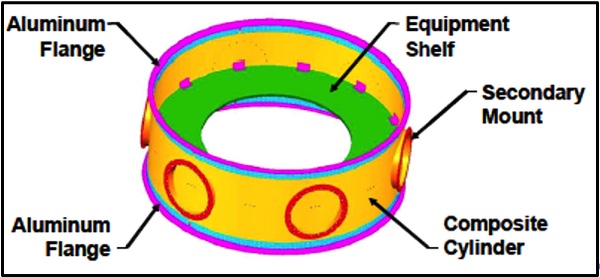 Figure 6. Composite ESPA configuration, ca. 2000. |
Peter Wegner’s new deputy PM at AFRL was Steve Buckley, who had recently retired from STP and the Air Force as a major. Buckley was one of the first to target aluminum for the ring. Maly recalls, “During the trade study, Steve pointed out that, ‘Hey, you know, we are trying to save every bit of weight going with composite, but we don’t have to do that. We can make it aluminum and we don’t have a weight budget.’”
As Buckley pointed out, an all-aluminum ESPA would be easier to manufacture, and acceptance testing would not be required for each unit after initial qualification testing. The AFRL, SMC, CSA, and Aerospace team discussed the issue at length. “We came out with a fairly heavy aluminum structure with a half-inch wall because we were trying to carry cantilever payloads,” remembers Joe Maly. “And we ended up with this beefy aluminum structure that has been successful. CSA/Moog has sold 50 ESPA rings by now. So, it was such a good idea for aluminum, and I give Steve a lot of credit for that.”[7]
The DoD and Intelligence Community had suffered 13 major failures between 1998 and 2000, including three Titan IV launch vehicles, losing Air Force and NRO payloads totaling over $3 billion. The resulting Broad Area Review (BAR) of space launch, chaired by former US Air Force Chief of Staff General Larry D. Welch, was completed in November 1999. Three follow-up reviews were conducted through 2003 by President George W. Bush and Secretary of Defense Donald Rumsfeld. It is important to recall at this point that the environment in which ESPA arose was during this highly fraught time for the space launch community when adding more satellites to a potential loss of vehicle seemed like a bad idea, to say the least.[8]
| It was a design of simplicity and perfection: the entire ESPA would be made from a single forging of aluminum without complex machining. |
The launch losses of the late 20th century were partially attributed to the acquisition reform environment initiated by Darleen Druyun, former Principal Deputy Undersecretary of the Air Force for Acquisition under President Clinton. “It was an environment of never second-guessing the contractors,” remembers Aerospace Corp.’s Lisa Berenberg. “Give them a contract and the government leaves them alone. Completely hands off, and then they go forth.” After the BAR, “the pendulum swung the other way. Everybody [in government and industry] became super risk averse. So, this was all happening while we’re trying to sell a new technology that does nothing but introduce perceived risk.”[9]
Back on Kirtland Air Force Base and at CSA Engineering in Mountain View, California, AFRL and CSA engineers and analysts got to work. Emily Calvanese and Mike Evert were among that early group for the composite-versus-aluminum studies. Besides Calvanese and Evert, the analysis team included Raman Johal and Jason Salmanoff, with Joe Maly and Paul Wilke supervising. “We had three analysts in the company at the time,” Calvanese recalls, “so all of us were touching pretty much everything at some point or another. And I was doing the finite element modeling for the design they were putting together as well as stress analysis and module analysis.”
The trade study on an aluminum ring began by considering several payload configurations and wall thickness sets. For example, an aluminum cylinder with a wall thickness of 0.4 inches (1 centimeter) resulted in characteristics that were similar to the initial proposed 0.3-inch-thick composite design. It was found that the primary payload would vibrate less during launch using an aluminum ring, but lateral rocking modes of the secondary payloads would increase. Design parameters such as added ring stiffeners, wall thicknesses, and aluminum material types were incorporated.
 Figure 7. Preliminary Design Review Concept Illustration, March 2000. Courtesy Moog, Inc. |
Calvanese describes the lengthy design and analysis process during the pre-ChatGPT-days at the turn of the 21st century:
So, for each one of them basically I was chopping it down to a repeatable segment doing finite element analysis—FEA. You can’t analyze something that is big and complicated. There are too many ways it can go. If you can take a tiny piece, I can figure out what happens on this tiny little piece, and then the piece next to it, and then the next piece, and so forth. Then, if you have enough computing power, you can do that on large structures by breaking it down and analyzing small pieces. So that’s the idea behind FEA. I would apply meshes to it. We had different configuration on how we would do the bosses? How were we going to attach things? What do the flanges look like and the radii look like? And for each of those I am creating models. I am creating multiples. You are looking at the stress and strains. Is this thing going to break if I’m pushing on it? Will it snap it? Looking at the fatigue loads, if this thing is sitting there and we are cycling it in a launch vehicle, is this thing going to fall apart? And making sure that ESPA survives.
Now, the second type of model is representing more the stiffness and performance of the ESPA. Because now, instead of looking at how the environment affects the ESPA itself, I am looking at putting the ESPA into an actual launch stack with other items and seeing how it affects the rest of the stacks. Is it stiff enough, are the flanges floppy and the thing on top going to be moving too much? Is it really soft? We’re changing the modes of the stack to where the rocket can’t control the stack. Is it really, really stiff, which could be good or bad depending on if they were counting on flexibility. Did we take that out where they thought they’d have, or are we just shifting things?
We are also looking at physical space that we are putting in there. How much are we moving things up, where’s your envelope in all the different fairings? We’re shifting everything up now. Are we too close to where the fairings start to taper in and now pieces are going to hit? When we have the interface defined, then the designers are looking how to machine this thing. Then I am coming back with, OK, that’s great you want that from a machining view, but if you put that cut there now, you have introduced a stress riser. So, there is a lot of back and forth with the [government and industry] designer team.
After running simulations, designing models, and testing aluminum wall thicknesses ranging between 0.15 to 0.5 inches (0.38 to 1.25 centimeters) under various loads, it was decided that the 0.5-inch-wall configuration was preferable to more complex composite and aluminum designs with stiffeners. Moreover, a solid aluminum ring added only about 100 pounds (45 kilograms) of weight to the stack. It was a design of simplicity and perfection: the entire ESPA would be made from a single forging of aluminum without complex machining. Based on positive feedback from AFRL and CSA machine shops and the results of the preliminary stiffness studies, complete finite element and solid models were built of the solid single-piece aluminum ESPA, and a final design trade study was performed. By the late summer of 2000, a final decision was made to proceed with the all-aluminum ESPA with 0.5-inch-thick wall.
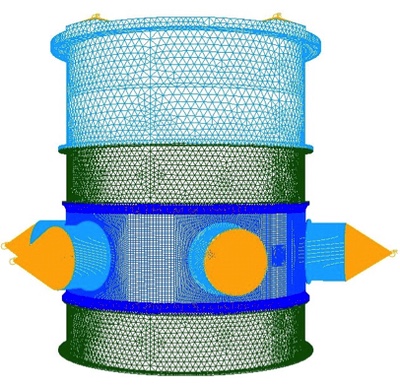 Figure 8. Finite element model of ESPA test stack for stress analysis. |
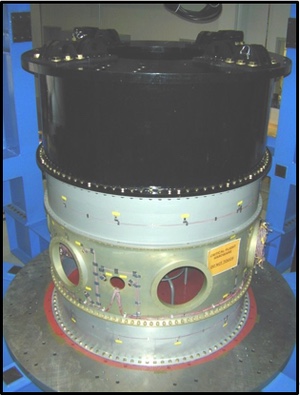 Figure 9. ESPA test stack hardware. |
 Figure 10. ESPA test stack with secondary load heads. |
The “birthday” of the ESPA ring is celebrated on January 18, 2001—which also happens to be the birthday of primary ESPA designer Mike Evert—when the final forged aluminum ring was presented at the Critical Design Review (CDR) at Space and Missile Systems Center in Los Angeles. The Air Force EELV program office, Boeing, and Lockheed Martin launch vehicle providers were in attendance. However, although approved by EELV and STP for use, “it was just the tip of the iceberg of challenges we faced,” Lisa Berenberg recalls. None of the many missions sitting in the STP SERB list wanted to fly on an ESPA.[10]
“We finally realized in 2001 that nobody wanted to host us, and that we're going to have to put our own mission together,” Berenberg said.
Testing the ring, setting the standard
Peter Wegner describes the confusion of some in the EELV SPO. “We were getting pressured by the EELV program office that didn’t want us to do this. Then it was Air Force Research Laboratory leadership who didn’t want us to do this.” After all, the technology had been presented successfully at the CDR, and although it was agreed it had potential, a program of record and launch provider had not agreed to launch using the ring. The engineering of the ring had been accomplished by the Lab, which was a success. But the huge enabling potential for science and technology and industry in the future was not as clear to leadership. Indeed, it is difficult to see the potential of a new electron microscope, for example, until the future discoveries are made.
The customary story of AFRL presenting new and novel technology for use by the warfighter should normally have ended at this point, having not crossed “the valley of death” of technology transition to the operator. Many similarly extraordinary technologies have been developed and not transitioned in the eight decades of AFRL’s space enterprise. Wegner and his fellow AFRL and industry ESPA teammates were still new in their careers: captains, majors, civilians, and contractors in their 20s and early 30s with more to lose than to gain, and still they pressed on. “I got a lot of heat over why I was wasting government resources on a project like this,” Wegner recalls. “It would not have happened without a bunch of people sticking their necks out and just pushing against the system to make it happen.”
AFRL’s Jeff Ganley remembers a similar risk culture the ESPA team had adopted: “I remember I was a pretty young employee, and I remember looking at [STP Captain] Scott Haskett, and he was just a mid-level captain, he was not a senior military person. And we’re walking into colonels’ offices and generals’ offices and asking them to do things they don’t want to do. I remember looking at Scott at one point and asking, ‘What are we doing?’”
Berenberg: “There were no SmallSat standards before we started this. The standard ESPA-class 24” by 24” by 38” standard, that didn’t exist until we set the ESPA at 24 inches. We weren’t building to a set standard—we were inventing the standard as we went along. Less than 200 kilogram and 24” by etc., that’s an industry, worldwide standard. That didn’t exist until we made it.”
Following a series of tests in the “Crusher” in the AFRL space structures lab, ESPA was successfully flight qualified in August of 2002 to ride on an Atlas V or Delta IV launch vehicle less than five years since the original Phillips Lab SBIR call. The final flight-ready ESPA—minus the machined payload adapter holes—was completed the following month. A combined team of researchers, scientists, and engineers from AFRL, CSA Engineering, Aerospace Corporation, the Space Test Program had successfully created an American system capable of deploying six 400-pound (180-kilogram) satellites, reducing launch costs for small satellites across the spectrum of design and fabrication using low-shock separation devices. Immediate benefits to the warfighter included the near-instant deployment of small satellite constellations on one launch vehicle, the significant reduction in launch costs for small military satellites, and the reduction of dynamic loads (vibration and shock) for primary and secondary payloads. The assured and rapid access to space ESPA provided would revolutionize the US space launch community, a revolution which continues as of this writing.
| The customary story of AFRL presenting new and novel technology for use by the warfighter should normally have ended at this point, having not crossed “the valley of death” of technology transition to the operator. |
The following month, in September 2002, the ESPA team held its technology transition briefing with its customer, SMC Detachment 12 supporting the Space Test Program on Kirtland, at which time the data package, engineering drawings, and test and analysis reports were delivered. However, the delivery of the actual flight ESPA was on hold until mission integration before launch, which was manifested for some time in fiscal year 2006 on a Boeing Delta IV or Lockheed Atlas V. For their extraordinary efforts, CSA Engineering won the 2002 National Prime Contractor of the Year Award. But who would take the first risk and fly with an ESPA?
Although transitioned, the ESPA had not yet flown and the uncertainty of utilizing a secondary payload adapter in the US space community remained. CSA’s Emily Calvanese and other members of the government and industry team continued studies to create a growing literature and technical operating report (TOR) assuring potential customers the ESPA would follow a “first, do no harm” policy.
As Calvanese explained: “Honestly, I think the biggest challenge was helping folks understand that this is not going to harm your stack. How do I present the results in a way to help people understand that the ESPA rings are not going to bother you? We were doing studies to show that you can put satellites down here on the bottom, and this satellite on the side isn’t going to bother the others. Even though it is coupled, they will interact, but it won’t cause harm to your system. We showed that if there was a concern, we could put an isolation system in between and you can decouple those. So, we were bringing our technologies to the table to try and convince the community of the usefulness of having this adapter. It took a long time to get people to buy into that. Now they just assume that it is OK to have an ESPA up there.”[11]
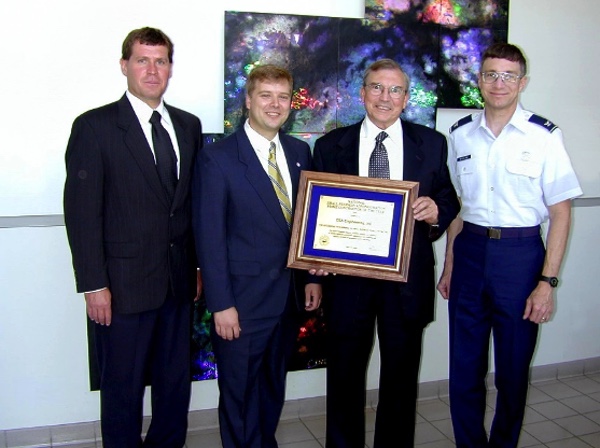 Figure 11. (left to right) Eugene “Gene” Fosness (AFRL), Keith Denoyer (AFRL), Conor Johnson (CSA), and AFRL Space Vehicles Director Col. William McCasland presented with SBA Small Business of the Year Award, 2002. |
True to form, AFRL was the first to stick their neck out with a proposal for the first use of the ESPA. Greg Spanjers is the current Chief Scientist of AFRL’s Integrated Capabilities Directorate, but in 2003 he was the program manager for a new spaceflight experiment called the Deployable Structures Experiment (DSX). Part of DSX’s mission was to test a new type of deployable solar array and operate experiments in the volatile environment of the radiation belt. “We were trying to figure out how are we going to get DSX launched, because we needed to get to Medium Earth Orbit at about 10,000 kilometers, which is a hard place to get a rocket to go, especially when you're a secondary experimental payload.”
Aaron Adler, who was the DSX Deputy PM at the time, remembers being approached by Spanjers: “I remember Greg coming to me and saying, ‘Hey, how large a power cell system do you think we could put on that new ESPA ring?’” With the historic difficulty of science experiments finding a ride to space, Spanjers, Adler, and the DSX team began to design the mission and multiple payload experiments around an ESPA hub with separate avionics and payload modules mounted onto the ports, a concept that had never been used before. The baseline technical review for DSX the following year in 2004 revealed some possible difficulties in attaching secondary payloads to the ring. The flanged port design was revised into a boss interface, making it easier to integrate the secondary payloads. The result was an even stronger, more user-friendly ring.[12]
 Figure 12. AFRL’s Greg Spanjers. |
Also in 2004 the ESPA team was approached by NASA’s Jet Propulsion Laboratory with a request to adapt larger secondary payloads. Instead of a 15-inch (40-centimeter) port designed to carry 400-pound spacecraft, CSA utilized remaining AFRL SBIR funding to design a larger, 24-inch (60-centimeter) interface. Working with launch providers Boeing and Lockheed, the team used their own defined mass acceleration curve (MAC) of the original 181.4 kilogram/400-pound payload design to create an ESPA MAC of 700 kilograms/1,543 pounds for the 24-inch “ESPA Grande.” Pete Wegner’s PM at AFRL, Steve Buckley, who was the first to propose an all-aluminum ESPA during the design phase, used his ingenious common-sense engineering approach to determine the 24-inch port size for the Grande, a design still used two decades later by the space community.[13]
However, before DSX would launch their ESPAsat and before the 24-inch ESPA Grande would fly, the original ESPA remained to be tested on orbit. At the STP program office at SMC on Kirtland, the mission that would launch the first ESPA into orbit, STP-1, began to come together. They were scheduled to launch their primary payload, the Defense Advanced Research Project Agency (DARPA) “Orbital Express” satellite on a Lockheed Atlas V rocket. Orbital Express was designed to validate the technical feasibility of robotic, autonomous on-orbit refueling (which currently remains a top priority for the US Space Force with more validation missions set for the near future.)
STP also designed a secondary payload to fly beneath Orbital Express, STPSat-1, which itself carried two payloads, both designed and built by the Naval Research Laboratory. AFRL’s partner in nuclear R&D in New Mexico, Los Alamos National Laboratory, also planned to hitch a ride on STP-1 to test their Cibola flight experiment, which included Field Programmable Gate Arrays (FPGAs) in a space environment to allow for flexible on-orbit computer processing. The students and faculty of the US Air Force Academy in Colorado Springs also had a payload for ESPA’s maiden flight. The young cadets and their faculty mentors—which included AFRL scientists and engineers—designed and built FalconSAT-3, the fourth in a series of small satellites created as part of a capstone space design course and which brings together about 30 cadets each year from several different academic departments. A similar satellite designed by the students at the US Naval Academy called MidSTAR-1 would take the final port on the STP-1 mission.[14]
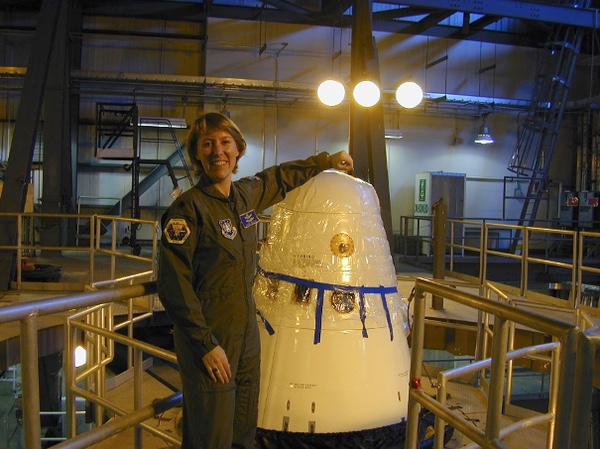 Figure 13. STP’s Colonel Carol Welsch in front of STP-1 nosecone. |
Leading STP-1 from Kirtland was Space Vehicle Program Director Colonel Carol P. Welsch. She oversaw the coordinating of the payloads in late 2005 before their being shipped to Cape Canaveral for integration with the Atlas V launch vehicle. “It was a huge effort,” Welsch recalls. “We were doing something that had never been done before. The launch community is very conservative, and rightly so. It’s a very challenging environment because we were R&D payloads working with a launch community that was, by nature, extremely risk averse. It was arduous because there was so much concern about this multitude of R&D payloads, watching so many payloads at once. Our role at STP was to bring this whole team together. We had the responsibility to ensure that this was going to be a safe mission.”[15]
The launch
The original launch date of STP-1 was pushed from December 2006 due to the launch of Space Shuttle Discovery’s STS-116 mission to deliver an attachment of the International Space Station’s P5 truss segment, rewire the station’s power system, and exchange the ISS “Expedition 14” team members. The original launch window of the night of March 8, 2007, was pushed to the following day, the 9th.
Sitting some 55 meters above the Cape at the historic Space Launch Complex 41 that March day aboard a United Launch Alliance Atlas V rocket were the hopes of many dozens of Air Force officers, civilians, industry engineers and scientists, and young academics.
“I was nervous as all get out,” Welsch remembers. “I walked into the control room that day the morning of the launch and just really got overwhelmed. I had to sit down. But then your training kicks in. We had trained like heck. It was new to a lot of us because this was the first time STP had ever launched an Atlas V. Traditionally, we had launched small launch vehicles like the Minotaur I or the Minotaur IV. So it was very new to us as a team.” Colonel Welsch sat beside the STP-1 mission director, Commander of 45th Launch Group, Cape Canaveral Air Force Station, then-Colonel James Greaves (who would go on to run SMC and, later, the Missile Defense Agency and retire as a three-star general), and space vehicle director Lt. Col. Walter Lauderdale.
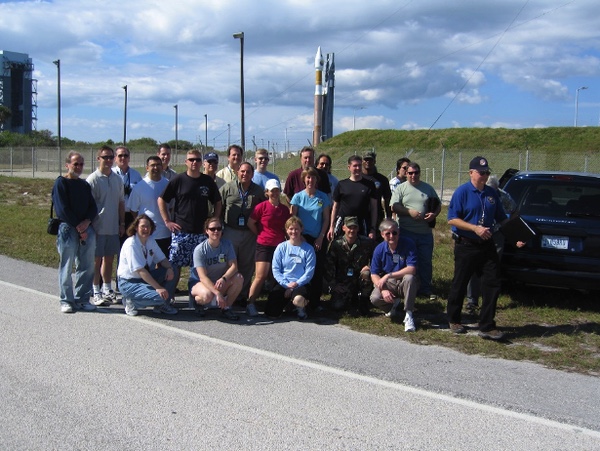 Figure 14. The ESPA Team at First Launch. |
“We had our checklist to do. When you're doing a launch, you’re working through the checklist so fast. You’re trying to assimilate so much information, making sure that you’re not missing everything, making sure you’re hearing every conversation on every network,” Welsch remembers. Although Joe Maly and many of the CSA and AFRL team were on hand to watch the launch, the “official” task of watching the ESPA had fallen to a young lieutenant named Mandi Fuller. “We had to conduct an extra watch rehearsal to make sure that all the payload owners knew what to expect and knew how to handle any anomalies should the situation come up.” Lt. Fuller—who recently retired from Space Training and Readiness Command (STARCOM) as a colonel—had an important task: “Mandi had to sit and just stare at telemetry readouts, and she had one of the most important jobs, because she was able to cancel the entire mission from her console if she saw any of the zeros, for example, change to ones. She could cancel the whole thing.”
| “NASA told everyone about ESPA, and our phones were ringing off the hook,” Maly said. |
Just before 10:10 pm on Friday, March 9, 2007, the Atlas RD-180 engine began to roar. “The whole building vibrates, and you're like, wow, we did it!” STP-1 had successfully launched. “But as a satellite person, that’s just the start of it.” Would the ESPA work? Following the explosion of sound of launch came silence in the control room. But this was an expected silence. As the Atlas climbed higher and higher above the earth, there were 90 minutes of quiet until the ESPA got to the proper low Earth orbit.
High above the Earth, the primary payload fairing jettisoned, exposing the ESPA ring and the secondary payloads to space. “And then we’re rocking and rolling again,” Welsch recalls. At the prearranged altitude a series of springs on the adapter ports activated, fracturing the separation bolts holding the secondary payloads to the ESPA ring and disconnecting the electrical umbilical cord. Solar panels and antenna booms deployed as the space vehicles began to operate under their own power and engage in each of their separate missions. “And we're beginning to acquire satellite signals! So, as each one deployed off the ring, and we could confirm that we had deployment, we went through the scripted protocol to inform the satellite owner you now have satellite control authority. And each of the satellite owners went around and said, ‘Thank you for the ride!’ It went great. It’s an amazing story about the ESPA ring. I’m not from the Lab, but it’s one of the best tech transition stories I’ve seen come out of AFRL.”
“We got a ton of data that was really great from that first launch,” Aerospace’s Lisa Berenberg remembers. “It was a cascade effect.”
ESPA triumphant: The new standard in space
Joe Maly affirms the flood of requests for the ESPA that occurred after STP-1’s success. Before STP-1 had launched, NASA had decided to put a secondary mission on the Moon. This mission, the Lunar Crater Observation and Sensing Satellite (LCROSS), would be launched with the Lunar Reconnaissance Orbiter (LRO) to determine if water ice existed within lunar craters. After the successful launch and deployment of four secondary payloads from the ESPA in 2007, “NASA told everyone about ESPA, and our phones were ringing off the hook. Nineteen proposals from NASA went out and six became finalists that went to NASA HQ. NASA Ames won the competition, and picked Northrop Grumman to be their prime contractor, so we sold the ESPA ring to Northrop Grumman in support of their development of the Lunar Impactor.” On November 13, 2009, NASA announced for the first time definitive proof that traces of water had indeed been found on the Moon due to the deployment of LCROSS from a Northrop Grumman-adapted “satellite shepherding” ESPA ring.[16]
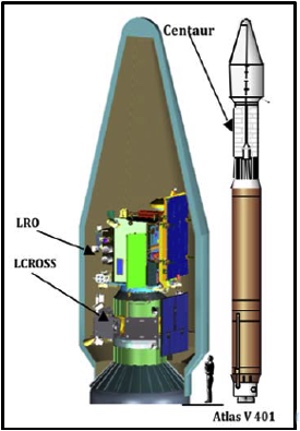 Figure 15. LRO/LCROSS Launch Vehicle Stack. |
 Figure 16. LCROSS spacecraft (artist rendering). |
Even before the success of LCROSS, United Launch Alliance had made ESPA a standard part number when Secretary of the Air Force Michael Wynne issued a policy memo in February 2008 for Air Force Space Command stating directly: “AFSPC should…make the ESPA available as a low-cost, highly reliable, standardized service for small payloads when technically feasible and consistent with overall mission assurance.” The Air Force Launch Directorate, STP, and ULA combined to implement this directive and make ESPA launches a routine part of launch rather than a rarity.[17]
Successes continued for the ESPA for space access. AFRL’s Automated Navigation and Guidance Experiment for Local Space (ANGELS) experiment successfully used the ESPA on AFSPC-4 in 2014 as its primary spacecraft hub, becoming the template for the “ESPA sat” design for small satellites and increasing US rendezvous, proximity operations, and station-keeping techniques with very small space vehicles in the process. Indeed, the success of ANGELS, specifically, and the larger number of small sat launches that ESPA enabled more broadly accelerated small sat technology R&D and Technology Readiness level (TRL) maturation timelines.[18]
 Figure 18. The first successful Falcon 9 booster to return following launch of OG2 mission in 2015 in front of original SpaceX headquarters in El Segundo, Calif. Elon Musk moved its headquarters to Starbase, Texas, in December 2024. |
An ESPA was used during the first return of the SpaceX Falcon 9 booster in 2015, has been used in multi-ring payload stack formations, such as on the 17 Orbcomm generation 2 (OG2) satellite constellation launches in 2014 and 2015, and the record-breaking SSO-A mission by Spaceflight, Inc. in late 2018, which launched an astounding 64 satellites into orbit. OG2 was a novel mission in its pioneering use of both a larger, Moog “ESPA Grande” design—a 42-inch-tall (107-centimeter-tall) ring with four large ports and an interior cone for mounting a co-manifested spacecraft as well as an aluminum flat plate which adapted the ESPA Grande’s four-point-mount interface to the standard 24-inch-diameter ESPA.[19]
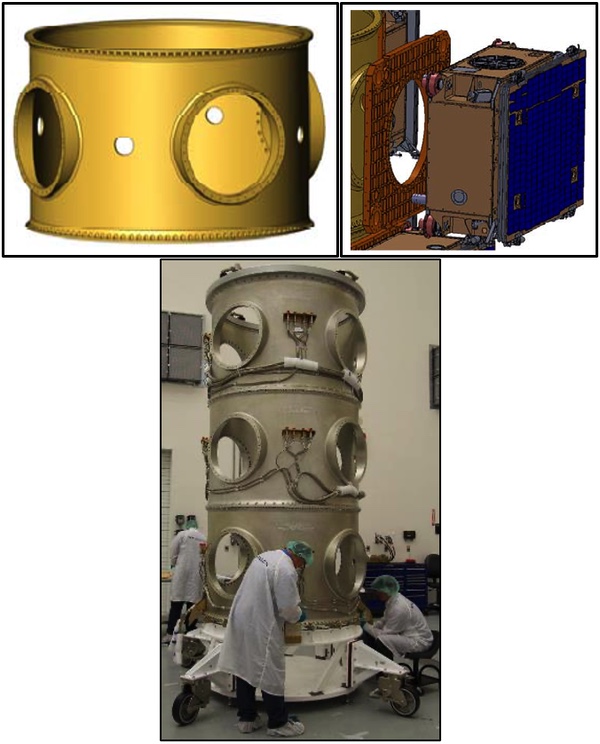 Figure 19. Clockwise from top left: the Moog “ESPA Grande” 4-port ring; the flat plat ESPA Grande adapter for standard 24-inch ESPA port; stacked ESPA Grande formation for OG2 mission. |
From adapter to space vehicle: ESPAStars and beyond
As early as 2011 AFRL was adding propulsive ability to the ring it helped make to eventually become the ESPA Augmented Geostationary Laboratory Experiment (EAGLE). Greg Spanjers and the DSX team had first conceived of the idea of a propulsive ESPA, but launch delays made EAGLE the first successful launch with this technology as part of the AFSPC-11 mission in April of 2018; ANGELS was the template for the smaller ESPAsat configuration, and EAGLE (and DSX) would become the template for the larger NG “ESPAStar” product line.
EAGLE was hugely important to the military space community. Not only was it the first space experiment to utilize a propulsive ESPA, but it also addressed a majority of the current US Space Force’s top 15 priorities to include Launch Detection/Missile Warning; Space Situational Awareness (SSA); Defensive Space Control; and Intelligence, Surveillance, and Reconnaissance (ISR). One of the separable payloads explored ways to enhance space object characterization and navigation, investigated control mechanisms used for flight safety, and explored the designs/data processing methods for enhancing SSA. Another payload involved an international partnership with Australia for testing new imaging and data processing techniques for the next generation of overhead persistent infrared systems needed for launch detection. EAGLE performed more than 500 experiments and achieved for AFRL the ultimate success of transitioning to another Space Force organization to continue development. These experiments were essential in closing critical technology gaps and provided important new concepts of operations for future space warfighters. AFRL’s EAGLE was the first program to demonstrate the capabilities of a propulsive ESPA bus and the Space Force quickly adopted this capability. Indeed, as of this writing more two dozen DoD, NASA, and commercial space flight programs have used or are scheduled to utilize the ESPA bus platform proven on AFRL’s EAGLE program.
 Figure 20. AFRL EAGLE deployed, artist rendering. |
In the 2020s, ESPAs have become the backbone of the US Space Force architecture, even if the EELV program has morphed. In 2016, the US Air Force announced that it would be transitioning from the EELV program to a new acquisition strategy, which would focus on competing launches between different providers. The National Security Space Launch (NSSL) program, which was established in 2019, is the successor to the EELV program. The NSSL program is responsible for acquiring launch services for national security space missions, and it has certified several launch vehicles, including the Atlas V, Delta IV, Falcon 9, and Falcon Heavy, to compete for these missions. Moreover, the rise of reusable space launch systems mean they are no longer “expendable” (the second “E” in EELV), making the ESPA name somewhat defunct in favor of “NSSL adapter ring.”
No matter the name, the novel ring forged with the synergy of government and industry partnerships has made the technology the core of modern commercial and defense space industry, including such programs as the Long Duration Propulsive ESPA (LDPE) series of satellites. LDPE-1 was launched as part of Space Systems Command’s STP-3 in December 2021 and utilized a Northrop Grumman ESPAStar ring as the rideshare spacecraft for nine payloads. Referred to as a “freight train to space” for experiments and prototypes in geosynchronous Earth orbit based on lessons learned from the EAGLE mission, LDPE-1 and its follow-on LDPE-2 (USSF 44 mission, November 2022) and LDPE-3A (USSF 67, January 2023) improved nuclear detonation detection capabilities and demonstrating new space technologies in the areas of space domain awareness, weather, and laser communication.[20]
The ESPAStar module will also be used for the imminent launch of the Navigation Technology Satellite-3 (NTS-3) program in the late spring of 2025, which is set to revolutionize satellite positioning, navigation, and timing. NG’s Geosynchronous Auxiliary Support Tanker (GAS-T) design will leverage an ESPAStar-D satellite platform to add fuel and extend the life of on orbit USSF systems. ROOSTER 4 (Rapid On-orbit Space Technology Evaluation Ring)—also known as LDPE-4—will launch in 2026 utilizing an EPSAStar payload adapter with missions planned in GEO, MEO, and cislunar orbit.
| “We didn’t know we were setting a standard for the rest of the world for time going forward. We were exploring a cool idea,” Sanford said. |
The future use of ESPAsats and ESPAStars seemingly has no bounds, and in 2022 Northrop Grumman had to nearly double its 135,000-square-foot (12,500-square-meter) satellite manufacturing facility in Gilbert, Arizona, to accommodate the amount of ESPA orders coming in. To date there have been more than 15 ESPAStars and over 50 ESPAsats operating on orbit since STP-1 in 2007. Indeed, as of this writing NG—which is the primary offeror of the ESPA line of products—has sold $1 billion of ESPAStars and related mission work to include both the ring hardware and the missions built around the rings. Additional payloads likely total several hundreds of millions of dollars. The ESPAsats which are designed specifically to be hosted on ESPAStars and “bare” rings sales themselves have also hit $1 billion for NG. It can be safely stated that the initial work of AFRL on the ESPA has spurred roughly $2 billion in mission capability in its transfer to industry and transition to the operational Space Force.[21]
So, It’s fair to say that the development of the ESPAStar (EAGLE and beyond) has spurred $2 billion of mission capability in its transition from AFRL to industry.[22]
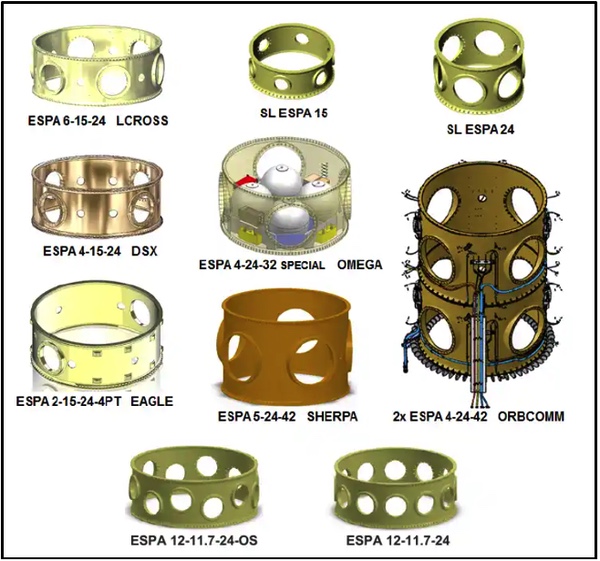 Figure 21. A (Partial) ESPA Family Tree. |
Coda: One ring to rule them all
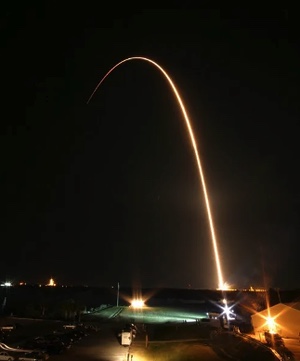 Figure 22. Success: Liftoff of ESPA aboard STP-1, 9 March 2007 |
The overnight success
In 1953, American comedian Eddie Cantor famously said, “It takes 20 years to make an overnight sensation.” The sensational success of the ESPA ring cannot be understated, nor is that success one attained overnight. When the team of young military, civilian, and industry scientists and engineers stood in front of the white board in AFRL’s Space Structures Lab in 1997 trying to come up with the name for a piece of technology that would revolutionize the way we get to space, they could not have known it would one day form the basis for more than 50 missions that have been launched by commercial and government parties. Many have been able to look with pride on what their hard work and determination has produced, but unfortunately not all. Steve Buckley, the STP major and AFRL civilian who would be foundational to the ring’s development, would succumb after a long battle with ALS in February 2014. “I remember he… would come to work eventually in his wheelchair,” Aerospace’s Lisa Berenberg remembers. “He worked up until almost, well, almost until the last day.”
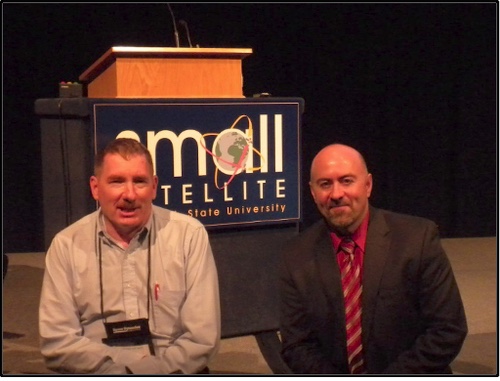 Figure 23. The late Steve Buckley and Peter Wegner at the 2007 SmallSat Conference. |
AFRL’s Gene Fosness recalled, “Steve was great guy. He really was. He always tried to make sure…he always did what was right. Even though there might have been a lot of pain. He did what was right.”
Aerospace’s Kitty Sedam: “Steve was such an advocate.”
“He was such a big element in all this,” Moog’s Joe Maly remembers. “I miss him. We all do.”
“Could this happen in today’s environment?” Aerospace’s Les Doggrell pauses for a moment. “There’s a constant tug-of-war between standardization and innovation that’s continuing to evolve.”
The men and women who took that initial risk have gone on to serve in superb and, in several cases, high-ranking positions in the civil service, industry, and intelligence community, most notably incoming Secretary of the Air Force Dr. Troy Meink. But in the late 1990s they were simply young scientists and engineers with a desire to serve looking to solve a challenge. “It was a different world, and I don’t know why. We felt we had the freedom to make something up,” Berenberg recalls.[23]
ESPA 2050
It took 25 years for the ESPA to develop into what it is today. How will it continue to adapt to the next 25 years? The ESPA/NSSL adapter will likely continue to form the basis for increased access to the orbital environment for years to come. The ESPA ring might become even more modular and reconfigurable, allowing for easy integration of different satellite sizes, shapes, and types. The ring might be made from advanced materials, such as carbon fiber, nanomaterials, or smart materials, which could provide improved strength-to-weight ratios, thermal management, and radiation resistance. The ESPA could be refashioned to support in-orbit assembly and servicing of satellites, enabling the creation of more complex and capable spacecraft. The ring itself may gain more intelligent and autonomous integrated sensors and machine learning algorithms to enable real-time monitoring, fault detection, and adaptive control. Orbital factories may allow ESPAs to be fabricated using 3D printing and additive manufacturing techniques and enable the creation of complex geometries, reduced material waste, faster production times, and support in-space manufacturing and recycling of satellites, enabling the creation of new spacecraft components, propulsion systems, and other critical infrastructures.
Back on earth, Emily Calvanese, who recently retired after a decades long career at Moog, still remembers the uphill struggle against the status quo of space access. “Folks were only building large satellites, and they all were worried about the same thing. This was about doing a lot of different analyses and doing things differently. This is from my perspective. These were the issues I was hearing. Other folks were hearing others object saying, ‘Well, I don’t want the timelines compromised because some little satellite isn’t ready for launch.’ There were integration objections: ‘What if when you install the secondaries, what if someone bumps my primary up top?’ Obviously, if you’re the Christmas tree topper, if you are the one on top, you are going to be worried about adverse effects. These days one of the biggest uses of an ESPA is not necessarily in the traditional idea, it has evolved so much since then. The first idea from all of us was, ‘Let’s use up some of this little bit of extra room at the bottom of the satellite and see what we can come up with.’”
Greg Sanford: “We didn’t know we were setting a standard for the rest of the world for time going forward. We were exploring a cool idea. Let’s test it, fly it, see if it works. We knew if it didn’t work no one was going to redo it.”
Peter Wegner: “I honestly didn’t know any different. I didn’t know I wasn’t going through the right bureaucratic processes. We just went out and did it.”
References
- Intvw, Johnson; Fosness, SBIR CFP, 1997.
- Intvw, Sedam and Doggrell.
- Maly, et al., “ESPA from Concept to Flight Hardware.”
- Interview, Barron Oder with Eugene Fosness, 11 December 1997, AFRL History Office and Archives; Intvw, Raspa with Fosness.
- Interview, Darren Raspa with Joseph Maly, 28 Sept 2023; Intvw, Berenberg, Ganley, Sanford, and Wegner.
- Intvw, Berenberg, Ganley, Sanford, and Wegner.
- Maly, et al., “ESPA from Concept to Flight Hardware”; Interview, Darren Raspa with Joseph Maly, 28 Sept 2023.
- Gen. Ellen M. Pawlikowski, USAF (Ret.), “Mission Assurance—A Key Part of Space Vehicle Launch Mission Success,” High Frontier, 15 July 2008.
- Intvw, Berenberg, Ganley, Sanford, and Wegner.
- Maly, “ESPA: the First 20 Years.”
- Interview, Darren Raspa with Emily Calvanese, 5 October 2023, AFRL Phillips Research Site History Office and Archives.
- Interview, Darren Raspa with Emily Calvanese, 5 October 2023, AFRL Phillips Research Site History Office and Archives; Interview, Darren Raspa with Joseph Maly, Part II, 5 October 2023.
- Interview, Darren Raspa with Joseph Maly, Part II, 5 October 2023.
- Interview, Darren Raspa with Carol Welsch, 12 August 2024.
- Interview, Darren Raspa with Carol Welsch, 12 August 2024.
- Interview, Darren Raspa with Joseph Maly, Part II, 5 October 2023; Interview, Darren Raspa with Conor Johnson, 29 October 2024, AFRL Phillips Research Site History Office and Archives Collection.
- Daniel Andrews, NASA Ames, “LCROSS Lunar Impactor—Lessons Learned from a Small Satellite Mission,” 24th AAIA/USU Conference, Logan, Utah, 2010.
- TRL is a measurement system used to assess the maturity of a technology, typically on a scale from 1 to 9, where 1 represents a basic concept and 9 indicates a fully operational technology proven in a real-world environment originally developed by NASA to evaluate the progress of space exploration. Debra Werner, Space News, “Government agencies prepare for piggyback flights, secondary payloads,” 17 Sept 2018.
- Joseph R. Maly and Gooding, James C., “ESPA Satellite Dispenser for ORBCOMM Generation 2,” 27th Annual AIAA/USU Conference on Small Satellites, Logan Utah, 2013.
- Michael Hill, Potomac Officers Club, “Space Force Awards Northrop Grumman Deal to Build SmallSat Carrier Bus,” 11 July 2022.
- Email, Darren Raspa with Rahul Saha, 3 March 2025, AFRL Phillips Research Site History Office and Archives Collection.
- Joseph R. Maly, “ESPA: the First 20 Years,” Rideshare Symposium, NASA Ames Research Center, 14 June 2018; “Northrop Grumman Expands Gilbert, Arizona Satellite Facility to Meet Growing NASA and National Security Space Program Needs,” 22 April 2022.
- Sandra Erwin, “Trump taps space and intelligence veteran Troy Meink as Air Force secretary,” Space News, 16 Jan 2025.
Note: we are now moderating comments. There will be a delay in posting comments and no guarantee that all submitted comments will be posted.